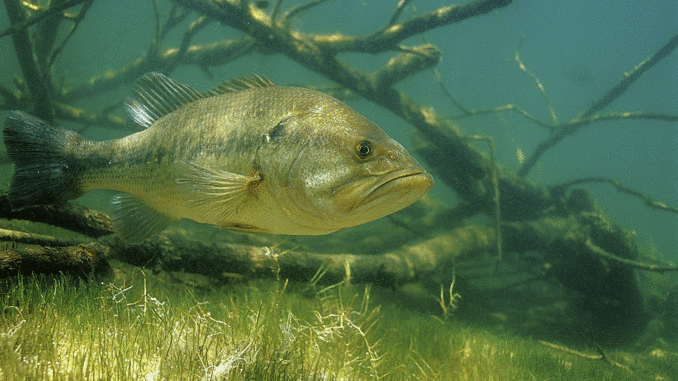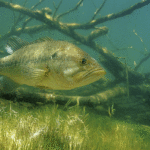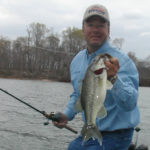
Key on those places to find staging bass
I do a lot of seminars at fishing shows and boat shows around the country, and it’s hard to teach people a lot in just 30 minutes, but the one thing I try to get across to bass fishermen is that the most important thing to having success on the water is to understand the seasonal patterns of bass.
To catch fish consistently, you need to know what seasonal pattern the fish are in. Make no mistake about it, in South Carolina, bass are going to be in a prespawn pattern this month. They may still be in a winter pattern in some lakes, and what they’re doing can really vary from, say, Lake Hartwell to Santee Cooper to Lake Wylie — which are hundreds of miles apart — and it can be so much colder that far to the north that fish may not be doing the same things.
But on most of our lakes, I’d consider February to be a prespawn month. It’s the time that those big females make their first move out of deep water and stage on places before they sure-enough head toward the banks to spawn. The first thing you have to do on the water is figure out if they are making their move. Once you do that, I’ve found that the prespawn pattern is one of the easiest ones to figure out as far as where they should be and how you can catch them. Of course, that doesn’t mean they’ll be easy to catch. As you know, in February, it can be 80 degrees or it can be 20, and they’re easier to catch on those 80-degree days.
The key to finding those fish is to look for deep water close to shallow water, with cover. The first person I ever heard say that was Larry Nixon, and I was much younger and didn’t understand what he was talking about. Now I do. To find those big staging females the are entering the prespawn pattern, you want to fish places where you can be sitting in your boat over 20 feet of water and be able to cast into one to five feet of water.
There are a lot of places on a lake where you can sit in 20 feet of water and cast a 1-ounce jig a country mile and have it fall in 15 feet of water. You don’t want open water like that. You want to sit in 20 feet and cast shallow. Those steep drops are the kinds of places where a big bass will make its first move out of deep water without having to make a long trip. She can go from 20 feet in the channel to five or six feet deep up on the edge of a flat without having to swim a hundred yards horizontally.
The other big key is the phrase “with cover.” Cover can be anything from vegetation to brushpiles, standing timber, cypress trees and lily pads. It will be different on different reservoirs. My favorite cover is vegetation be it hydrilla or elodea or eel grass or lily pads; that’s the cover I like to fish the most. In February, even though a lot of vegetation will be dormant, those fish will still like to get around it.
Now, for my money, the way to catch fish is with a big worm or a creature bait or a big jig, and that’s what I’ll fish when I start to slow down and really cover an area, but in February, you want to be searching for those spots with a crankbait. I like to throw a Rapala DT-6 or DT-10 in a crawfish pattern. You’re covering a lot of water, even though you’re retrieving the bait slowly, maybe even with a stop-and-go rhythm, looking for that patch of vegetation or that brushpile or stump on the drop that’s holding those fish.
Another way to search for cover is with a side-imaging depthfinder like my Humminbird. You can idle parallel to a break and see if there’s grass or brush or stumps on the break that will hold fish; that’s a huge tool we have now to find places like this. If I find cover and stop and catch a fish, I’ll mark that spot as a waypoint or make a mental note of it and either come back and fish it later or slow down and fish it right away with a mop jig, which is a great big-fish bait.
There are some shortcuts you can take so you don’t have to fish all over a 20,000-acre lake to find fish. I look for fish more on the lower end of the main lake. Northeastern corners are really good, because they catch more sunlight, and the bass will stage earlier on those places.
The other thing is, while I usually like to fish stained water, in the early spring, I like to fish clear water. I don’t like to fish cold, muddy water; the bass don’t like it. I want to fish clearer water for my crankbaits; I don’t need stained water for a spinnerbait like I will later in the spring.
You also need to know that bass will be ganged up on these staging areas; good cover will usually hold a group of fish; they’re harder to find because they’re not everywhere. Because they’re ganged up, when you catch a fish on a piece of cover on a crankbait, you can slow down and really work that place out with a jig. The action is not going to be like it is in postspawn when you can catch a fish every cast. You may find a school of 10 to 20 bass staging on a little patch of grass or standing timber, but you’re going to have to work harder for them. You might catch a fish every 10th cast, but you can still catch a pile of fish without moving.
So take some time this month to fish “deep near shallow near cover” and expect to catch some of the best fish of the season or of your fishing career.






Be the first to comment